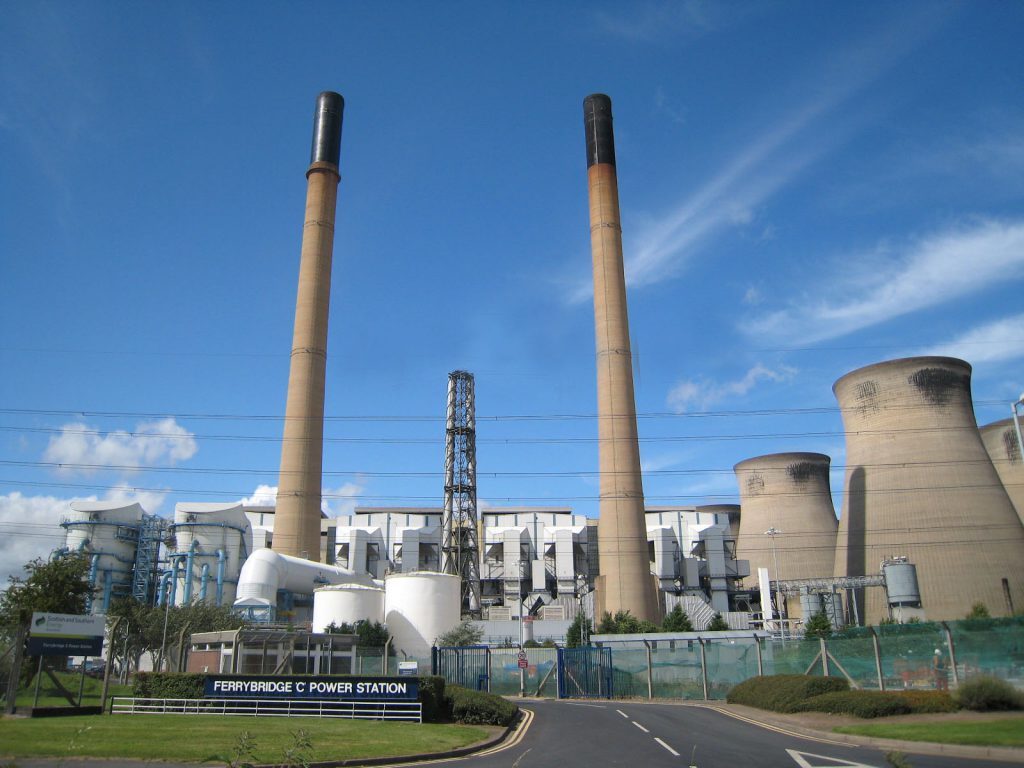FOSSIL FUEL DECOMMISSIONING: POWERING AHEAD ON BETTER ASBESTOS MANAGEMENT
18 January 2018Stuart Goodman, the Safety Consultant at Lucion Consulting, considers the strategic management of asbestos in the decommissioning of fossil fuel power plant programs.
The UK government has made it clear that all remaining coal power stations will be forced to close by 2025. Indeed, one of the country’s eight remaining coal power stations is expected to cease generating electricity this year as part of plans to phase out coal under the Conservative Party’s flagship green policies.
While three plants shut in 2016, and most are expected to halt operations by 2022, the last ones standing will be forced to finally close in October 2025 because of new pollution standards. These include Drax and Eggborough in Yorkshire and Aberthaw in South Wales. Ferrybridge is in the process of going through demolition internally but is not demolished yet.
The decommissioning of fossil fuel power plants represents a wider shift by governments and operating companies across the world in their strategic ambitions for reduced harmful emissions and securing future domestic energy requirements.
Many countries are already, or considering, replacing ageing and end-of-life coal-fired plants with renewable energy sources. Indeed, throughout Europe, our experience reveals that the focus is on a planned transition from carbon-intensive power generation to meet the long-term aim of creating a low-carbon society.
Driven by legislation to reduce emissions, commercial reasons, and moves to rely more heavily on renewable energy sources, power plant decommissioning is required to shut down these sites safely with minimal harm to the surrounding environment.
Challenges
However, a significant proportion of the UK’s stock of fossil fuel power stations are over 40 years old – some even older, having been constructed in the late 1950s and early 1960s. So, this can pose a significant challenge for those with responsibility for site decommissioning, notably around engineering and environmental considerations.
Historical information about any potentially hazardous materials a power plant contains is often scant, incomplete, or simply missing. Building products containing asbestos are considered to have been extensively used in the construction of coal-fired, oil-fired and even nuclear power stations due to the so-called material’s capacity to insulate against extraordinary heat – it was used widely as a thermally insulating material to assist in reaching the high temperatures necessary to run the boilers and generate electricity.
Power plants required generators, turbines, and boilers among other equipment which were likely to be insulated with asbestos. Given the associated extreme temperature application, steam pipes, turbines, boilers, tanks, and other vessels were also often insulated with asbestos-containing attachments, including pipe covering, block insulation, gaskets, and heat resistant (refractory) cement.
Under the Control of Asbestos Regulations 2012 (CAR2012), the duty holder, usually the site owner, has a ‘Duty to Manage’ any asbestos and asbestos-containing materials onsite. This may appear straight forward but it does shine a light on the environmental and safety issues associated with the decommissioning of power plants, and the phasing out of fossil fuel generation assets and advancing the demolition process.
It also signals the significant challenges faced in identifying potential contaminants of concern, wider environmental worries, and the most effective approaches to the management and disposal of any hazardous materials for those across the power generation, EPC (engineering procurement and construction), demolition and environmental remediation sectors.
The duty to manage asbestos is directed at those with responsibility for protecting others who work in industrial premises, or use them in other ways, from the risks to ill-health that exposure to asbestos causes. It requires the duty holder to take ‘reasonable steps' to find out if there are materials containing asbestos in the power plant, and if so, the amount, location and what condition it is in. It also stipulates that a record of the location and condition of the asbestos, or any materials that might be presumed to contain asbestos, is provided. A plan is then drawn up laying out in detail how the risks from these materials will be managed before any steps to put the plan into action are taken.
Completion of a survey is a necessary first step in identifying and establishing the location of any asbestos hazard within a decommissioned site. But in preparing the survey, careful consideration must be given from the outset to some important factors: who should carry out the survey, how many people will be involved in the survey team, how long will it take to complete the work, how many samples should be taken, and will the whole process be difficult to complete?
A completed survey will then provide the basis for moving forward to the next stage: the creation of an asbestos removal management specification. The purpose of this document, which should always be tailored to individual site requirements, will be to ensure that each remedial contractor receives a clear and precise set of instructions covering what needs to be completed and by when. A typical specification would include guidance on which regulated practice is to be adopted and a location-specific detailed methodology. Guidance on the adjacent plant, cables and ducting should also be provided.
Insight into the planning, preparation, and execution involved in the safe management and removal of asbestos across a declining fossil fuel-powered energy sector, can be seen in the work Lucion is undertaking at Ferrybridge Power Station in Yorkshire. There, the power plant, which was decommissioned in 2016, cooling towers and ancillary equipment is currently being demolished and removed in a process that’s expected to take three years.
The work reflects some of the best practices undertaken by utilities and contractors, who have experience in demolishing and dismantling power plants, while overcoming some tough onsite conditions. The scope of work saw Lucion undertake a comprehensive survey to identify a range of hazardous materials within the insulating materials (asbestos, refractory ceramic fibres, cristobalite and ozone-depleting substances) contained onsite.
Further challenges around site access have seen Lucion’s team deploy mobile elevating work platforms (MEWPs) and ropes to survey external ducting and piping, while access inside the boilers required hatches to be cut to allow surveyors to be lowered in to collect samples of the inner walls for laboratory analysis. More than 13,000 samples were collected, providing a detailed picture of where hazardous materials were located assisting in the planning for safe demolition.
Contaminated land
While contaminated land is generally well understood, asbestos issues around soil disturbance and excavation are perhaps less known. In the UK, asbestos as a manufactured product, wouldn’t occur naturally in the ground where a power station is located. So why would it be an issue?
Extensive experience has shown that buildings previously demolished without removing the asbestos can generate long term contamination issues – building waste was traditionally reused for hardcore or simply buried in an uncontrolled and unrecorded manner. This can all have a significant impact on health and safety – and the risk of exposure to asbestos to ground workers – as well as the removal methods of waste soil, its destination, and the associated transportation and disposal costs. This all needs to be considered and there is guidance that determines whether waste soil can be disposed of as hazardous or non-hazardous waste following qualitative and quantitative analysis by experts.
There are clearly significant challenges around the decommissioning of the UK’s fossil fuel power plant portfolio, and those involved need to consider the role of effective asbestos management and follow best practices as part of a wider strategic approach. Investing in the right resources and employing contractors, with the requisite ‘big project’ experience and capacity, can only contribute to delivering success.
Tool Box Talk: Asbestos Awareness
As part of Lucion’s Take Care Be Aware initiative, we actively take care of our health and safety responsibilities, with continuous awareness of our commitments to knowledge share and educate.
In doing so we have created a ‘toolbox talk’ on asbestos awareness to raise awareness of the hazards associated with asbestos-containing materials, enabling safety professionals to share knowledge and overall save the time and effort in producing them for you and your teams.
_2.png)
Download From NexGen
RPE Face Fit Test Guide
Depending on the type of work being conducted, employees identified (through risk assessments) as being at risk of exposure to hazardous dust or other respirable substances must wear suitable face-fit tested RPE.
Discover the various types of RPE and whether your RPE needs to be face-fit tested with our free download from Lucion Consulting.
_1.png)
Download From NexGen
Health and Safety Risk Assessment Template
Risk Assessments are part of the risk management process and are included in the Management of Health and Safety at Work Regulations. A Risk Assessment is a process of identifying what hazards currently exist or may appear in the workplace. Utilise our Risk Assessment PDF example and template to help conduct your own Risk Assessment.
_1.png)
Download From NexGen


 NexGen
NexGen












